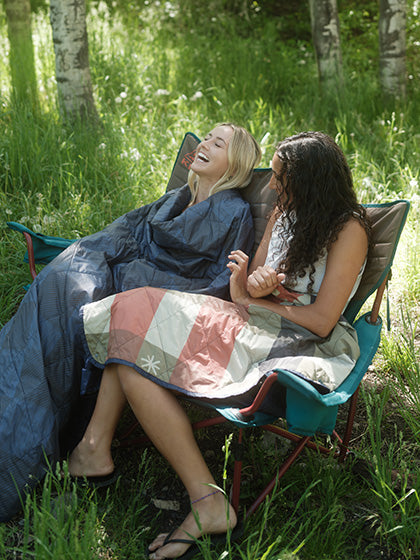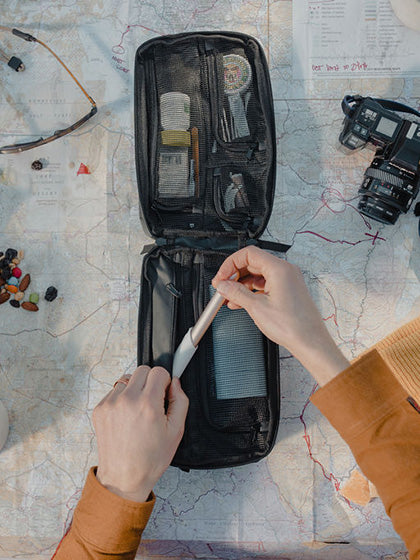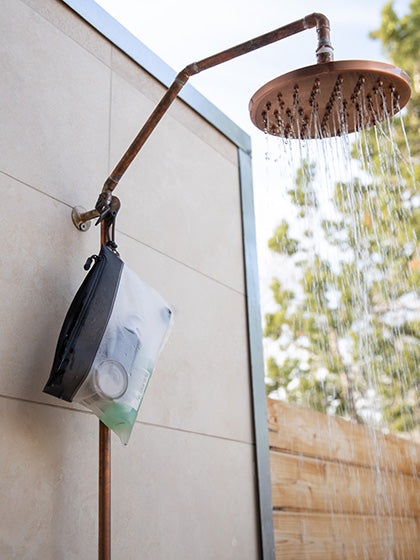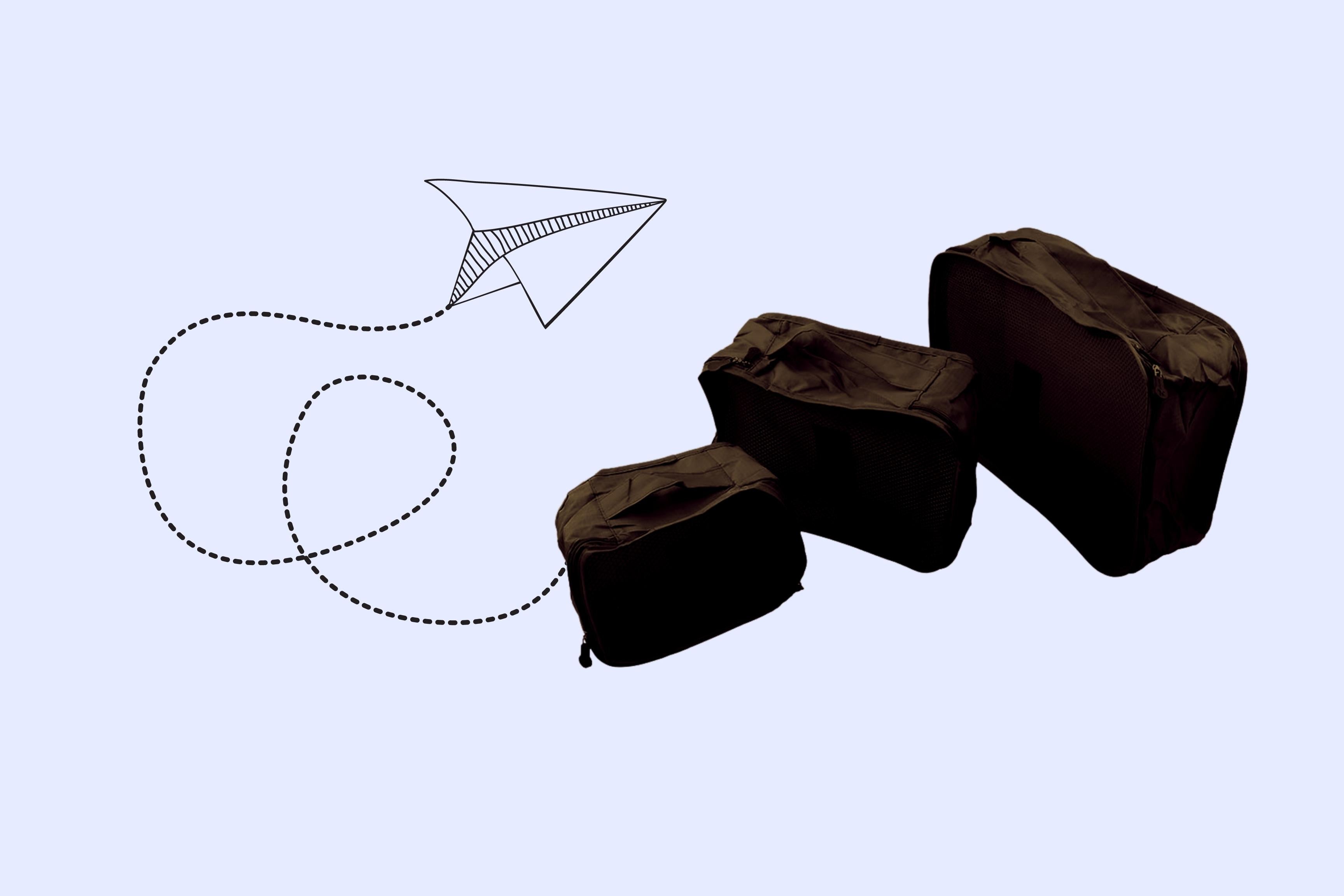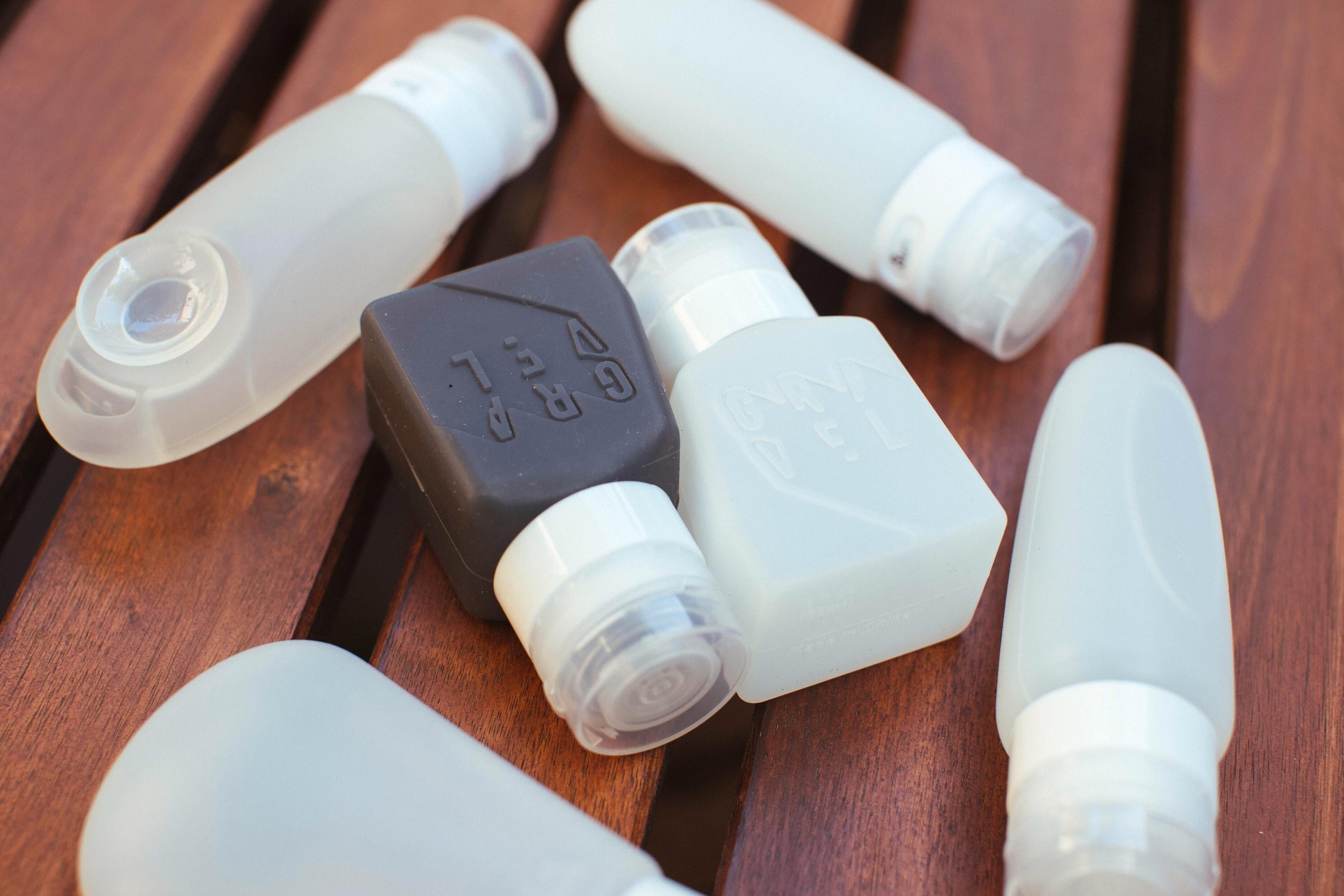When preparing for a trip, some travelers ponder the question, "what liquids can I bring in my carry-on?" Which usually opens up a new can of worms: "What about contact solution? Or the isopropyl alcohol in my first aid kit? Will TSA agents confiscate my hair gel, too? Ahhhh!"
We get it — traveling with liquids can be a gray area for many people, especially those who wish to pack light and travel with the bare essentials. But with the right preparation and traveling equipment, you can breeze through security lines with your shampoo, conditioner, saline solution, and, yes, the hair gel you suspect is flammable but isn't, really.
As long as you follow the rules set out by the Transportation Security Administration (TSA), plus a few packing tips from the Gravel Team, you'll be just fine!
The Dos and Don'ts of Traveling With Liquids
The best approach to carry-on liquids is to know exactly what the TSA allows beyond security checkpoints. To be safe, check the TSA's website for their liquids rule and follow it accordingly.
Keeping it nice and simple, here are some basic dos and don'ts:
Do: Pack one quart-sized, clear plastic, zip-top bag inside your carry-on bag or backpack.
Don't: Pack travel-size containers filled with liquids in anything larger than a quart-sized bag.
Do: Bring a peanut butter and jelly sandwich on the plane if that's your jam (pun-intended).
Don't: Pack a jar of peanut butter, jelly, jam, or any other spreadable in your carry-on that the TSA classifies as a liquid.
Do: Bring travel toiletries in your bag that are less than 3.4 ounces or 100 milliliters.
Don't: Pack full-size versions of each liquid in your backpack, such as a full bottle of shampoo, face wash, or body gel. Those will need to be checked.
Do: Pack a first-aid kit on a domestic flight in the U.S. as long as the bandage scissors in the kit have blades that are less than four inches. First-aid liquids such as isopropyl alcohol and hydrogen peroxide must be less than three ounces. The same goes for gels (e.g., antibiotic ointment).
Don't: Pack a first aid kit in your carry-on bag for an international flight, as these are generally not permitted when traveling overseas. However, they may be allowed in very limited quantities. When in doubt, check with the TSA and your airline.
Do: Empty the few remaining contents of your travel liquids from their larger bottles and containers, such as your mouth wash and sunscreen, into travel-size containers.
Don't: Pack bottles in your carry-on or backpack that are larger than three ounces even if the contents inside are less than this amount. In other words, if you have just a bit of product left in a full-size bottle of shampoo, mouth wash, or any other liquid, transfer it to a travel-size container before you arrive at the airport.
Do: Get clearance from security personnel when traveling with liquids up to five ounces that you'll need to bring with you on the flight for a medical condition. For example, diabetic passengers may carry glucose gels or insulin for on-board use.
Don't: Bring five-ounce bottles (or larger) of liquid in your carry-on or personal bag unless you have a specific medical condition and supporting documentation from a licensed physician. For more on traveling with liquids for medical reasons, check the TSA's website.
Do: Carry duty-free liquids on-board when traveling internationally as long as they're in a transparent bag, with the receipt either stapled to the bag or displayed at all times.
Don't: Pack aerosol containers, such as hair spray and shaving cream, in your carry-on bag if they exceed three ounces, as these must fly in cargo.
Let's Recap
As long as you know what the TSA permits and then double-check that information online, traveling with liquids in your carry-on bag should be easy-peasy.
An even better approach? Invest in reusable, silicone travel bottles with a leak-proof design. Not only will they help to prevent messy explosions of shampoo and lotion, but they're an ideal choice for the environmentally-conscious traveler.
Do you have any thoughts on traveling with liquids or these dos and don'ts? Please share in the comments! For more traveling tips, check out the rest of our blog.
Bon voyage!


